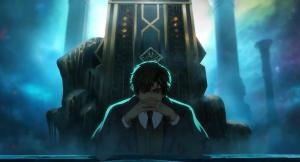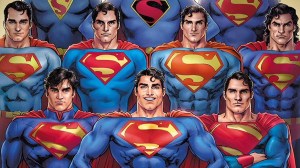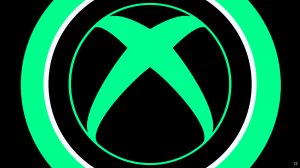Videos by ComicBook.com
Tuesday evening, I had the opportunity to interview Joe Antonacci, the driving force behind the new Joe Palooka series just published by IDW Publishing.For those of you who aren’t familiar with the original character, Joe Palooka was first brought to life by cartoonist Hammond (Ham) Fisher in 1921. The character first appeared in print on April 19, 1930 and at the peak of his popularity, the character’s eponymous strip was carried by 900 newspapers.The original Palooka was so culturally relevant that there is a mountain in Wilkes-Barre, Pennsylvania, Fisher’s home town named for him complete with a granite monument. In fact, when the character was married in the comic, engraved invitations to read the strip were sent out and formal acceptances received from such notables as the Chief Justice of the Supreme Court, the Attorney General, and General Omar Bradley.On top of a career in the funny papers lasting from 1930 to 1984, Palooka appeared in numerous comic books, radio, a TV series, and a few films and shorts.Knowing Joe Palooka‘s origins and legacy, I was understandably skeptical about the idea of resurrecting him as a mixed martial arts (MMA) fighter. The original character was a wholesome, idealized sports hero with real moral character. As a boxer and a heavyweight world champion who went on to punch out Nazis during World War II in a lighthearted style typical of the period, I was slightly disconcerted to see what appeared to be a tougher-edged Palooka bare-knuckle brawling in a much more modern artistic aesthetic.Speaking with Antonacci though, it was impossible not to hear the passion in his voice speaking about a character that obviously meant a great deal to him:”I grew up with Joe Palooka in the local newspaper,” said Antonacci. “Every day at age 9, 10, 11, 12, I would RUN home from school and rip open the paper to find out what was happening to Joe that day. Joe was always in some scrape or other, a villain standing over him ready to do him in, action, adventure…”I wasn’t checking the sports scores, I wasn’t worried about a team or athlete that I could ever see in person, I was invested in a fictional character possibly in a distant land in his time of trouble. I have that same love, that same affinity for the entirely new Joe Palooka comic book we’ve created.”Describing it as a “labor of love,” this has been Antonacci’s project from day one. The genesis of the Joe Palooka‘s rebirth comes from a conversation that he had with a friend named Ed Catto a few years ago. Catto had acquired the lapsed rights to a character originating in the 1960’s named Captain Action, described by Antonacci as “a costumed international man of mystery with a variety of gadgets.” That very night, Antonacci went home and checked the US Patent and Trademark Office website only to find out that the trademark for the comic book Joe Palooka had been abandoned in 1984. Seeing an opportunity, he set his sights on removing Palooka from the “dustbin of history” and introducing him to a new audience.Rattling off memories of the original character and the names of his series’ cast of characters (manager Knobby Walsh, blacksmith Humphrey Pennyworth, society girl and love interest Ann Howe), a listener would need no further convincing of Antonacci’s Palooka credentials.For those unfamiliar with his primary method of employment, Antonacci’s work as a notable ring announcer/emcee at boxing and MMA matches for ESPN, HBO, Showtime, and other networks gives him firsthand insight into the world of professional fighting. Describing his own transition from being primarily a “boxing guy” to also working at MMA matches as “potentially seen by some as traitorous,” Antonacci echoed some of my own feelings in connection with reinventing Palooka the boxer as an MMA fighter. However, as he describes it the rationale for the change makes sense both from a business perspective and in terms of making the character relevant to a modern comic-reading audience:”It was partly due to the popularity of MMA, which is red hot at the moment,” Antonacci explained. “These days boxing cannot draw the crowds that MMA does. You get Tito Ortiz vs. Rashad Evans [both UFC fighters] and you can sell out the Wells Fargo Center in Philadelphia. With boxing, if the top fighters meet in Philadelphia they cannot sell out a venue of that size, the only place that sells out is Vegas and then only with Manny Pacquiao and Juan Manuel Marquez [two of today’s highest profile boxers] or another very top tier fighter does battle.”MMA fans are generally younger, tech savvy, they know where comic shops are. Comics are being made into some of the most popular movies lately–Batman, Spider-Man, Iron Man, the X-Men, the Fantastic Four, etc. If you go to an MMA event and talk comics, the reaction is that they are overwhelmingly popular.”A boxing crowd might be interested in the old Palooka, but they aren’t going to be reading comics.”If you ask at an MMA event, maybe 50 percent of the crowd has bought a comic in the last year, ask at a boxing match and that figure is closer to maybe 10 percent. Besides, I want to bring Palooka fully into modern day, if you are going to reinvent him, then why not go all the way and completely reinvent him.”It is hard to argue with this logic based on the relative popularity of MMA and boxing and the audiences that Antonacci is attempting to reach. I still cannot help feeling somewhat skeptical about this element of the reinvention and whether the change from a mid-20th Century depiction of professional boxing to a 21st Century depiction of MMA will result in a larger tonal shift remains to be seen and the previews that are available are not entirely reassuring. There is something disconcerting about seeing what was a character described by his creator as a “big, good-natured prize fighter who didn’t like to fight; a defender of the little guy; a gentle knight” socking some guy across the chops with bare knuckles in a way that makes it look as though he will need professional dental attention.Perhaps though this is simply naiveté based on my perceptions of boxing and the impression given by the original art style relative to the newer artwork, but it is hard to set aside when considering what images are available related to the series.Antonacci strongly emphasized that he is maintaining what he sees as the core of the character, “the same morals, strong ideals, heart of gold, the fact that he would do anything for anyone in need.” He did make a clear distinction between what his ownership of the trademark of Joe Palooka allows him to do versus what the copyright to the original material, not currently owned by Antonacci, would allow him to include in Joe Palooka.While the trademark allows Antonacci to produce a comic by the name of “Joe Palooka,” this Palooka is not the same character as the old Palooka. They share a name, they are both fighters, they have the same core values, but they are not the same person. Ownership of the original character’s image and likeness does not rest with the trademark, and Antonacci cannot bring in the entire cast of characters from the original work. In fact, this new Palooka is actually named “Nick Davis” with “Joe Palooka” being a pseudonym presented to him by a Mexican tough-man contest host and announcer. (Incidentally, the original Palooka was apparently very popular in Mexico according to Antonacci.)Regarding his partnership with IDW, who is currently publishing the comic, Antonacci is complimentary of them and their ability to help him “put his comic into the hands of as many people as possible,” emphasizing that that he sees the title as being appropriate for youth as little as 10 or 12 years old. He said that the publisher was selected in part for their ability to do everything including produce printed comics, sell comics online, produce trade collections, and transition properties to television and movies (rattling off such current IDW properties that have made or are making the latter jump as 30 Days of Night, Teenage Mutant Ninja Turtles, Mars Attacks, and The Rocketeer).Further framing his relationship with IDW, Antonacci goes on to describe them as a perfect size for the nature of Joe Palooka at this stage of its development, big enough to widely expose the character and brand but just small enough to care where a larger company might allow the title to get lost in the shuffle.With guidance from Ed Catto and Heidi MacDonald (Editor-In-Chief of The Beat, a daily blog of comic news and something of a comics expert), Antonacci has put together what he feels to be the absolute best talent possible given the resources he was able bring to bear on this project.With writer Mike Bullock, artists Fernando Peniche, colorist Bob Pedroza, and letterer Josh Aitken, Antonacci seems confident that he has assembled a winning combination to bring this latest incarnation of Joe Palooka to the public. He has even brought on an MMA technical consultant, Phil Ross, to ensure that moves and holds are all authentically portrayed.With the first issue released yesterday, Antonacci said that the response to the book has been great and demand is high. With that in mind, he exclusively revealed and I can relay to you that the series’ second issue will be released on January 9, 2013, hopefully capitalizing on this positive reaction to the premiere issue.Returning to the idea of this project as a “labor of love,” this appears to truly be Antonacci’s project. While IDW is the publishing partner, he describes himself as having been the one backing and driving it since day one. When asked what he would like to say to potential fans, he said:”What I have done his is go on a three-year odyssey. I have given blood, sweat, and tears to bringing them best MMA-based comic with all the action, adventure, intrigue, chills, and thrills that I know how. I brought the best artists and writer (all award winners), colorist, and letterer that I could afford together with the best publisher to bring this character to readers. We are providing 12 covers for the first 6 issues, all artists I handpicked from a variety of styles, including Jace McTier an artist working in a very painterly style experienced in depicting sports figures and scenes. These covers are all paid for out-of-pocket and I have spared no personal expense to bring this to life. I have done my absolute best. IDW is publishing the comic, but they did not hire the talent and bring this together. They have been extremely supportive but they are publishing MY comic. No corporation put this together, just a bunch of people who love comic books and want to tell a great story.”The bottom line according to Antonacci is that “When they get to the last page, I want them to think that this was awesome and worth the $3.99. Then I want them to think ‘When can I get the next issue?’”You can’t really say better than that, can you? He even expresses the strong connection he has developed with the character to the point of feeling the punches along with him when he writes him into trouble and a new appreciation that he has developed for writers and actors who similarly can become lost in the characters they write or inhabit.Personally, I’m looking forward to picking up this comic. I still have my reservations, but knowing the passion and commitment that Joe Antonacci has for this project, I plan on sticking with this for at least a few issues and seeing how things play out. As I mentioned, I am and continue to be concerned about the tone of the comic relative to its classic namesake and there is something a bit more hard-edged about the modern depiction of MMA-style fighting that doesn’t quite sit well with me; however, further examination will have to wait for a review of the first issue. For the time being, I’m crossing my fingers that both Joes can go the distance and this series doesn’t end up KO’d in the 2nd round.










